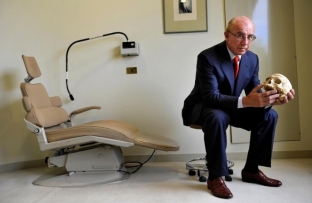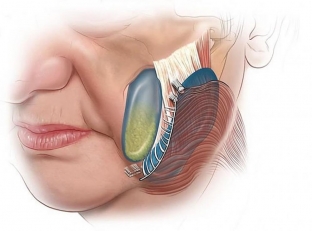The trend towards the maximum reduction of trauma in aesthetic medicine and the minimization of the rehabilitation period after invasive interventions forces specialists to seek and introduce into practice new methods for performing anti-aging plastic surgery. One of these facial modeling techniques was the spacelift, developed by the Australian doctor Brian Mendelsohn. What is the convenience and attractiveness of the technique for doctors and their patients, considered estet-portal.com.

Due to which spacelifting causes low traumatization of facial tissues
The spacelifting technique is based on work with the muscular-aponeurotic layer of the face, and in this it is close to the well-known SMAS-lifting. Both of these facelift techniques are associated with age-related changes that occur at the level of facial muscles and ligaments. With age, the ligaments that attach the facial muscles to the skin weaken. on the one hand and to the bones of the skull – on the other hand. The reasons for this weakening and stretching can be:
- the effect of gravitational forces;
- mimic activity;
- Change in bone density.
Weakened and sagging ligaments cause displacement of the soft tissues of the face, sagging skin, formation of wrinkles and folds, deformation of the facial oval.
Under the mimic muscles and between them were found spaces filled with adipose tissue – the so-called spaces, which shift and increase following the stretching muscle ligaments of the face. Moving the spaces to their original state and fixing allows you to return the face to a young look.
The location of the spaces, their shape and size may differ in each patient, and therefore are determined endoscopically. To date, methods have been developed for working with spaces of three areas of the face:
- zygomatic – eyebrows and outer corner of the eye, lower eyelid and cheekbones;
- buccal – malar area and nasolabial fold, marionette lines and lip corners;
- mandibular area – cervico-chin angle, angle of the mandible.
The surgeon moves the discovered spaces to their original position and fixes the muscle fibers where they were fixed in the patient at a young age.
Spacelifting does not require skin detachment and muscle tightening, as is the case with SMAS-lifting, it practically does not carry the risk of damaging blood vessels or nerve endings, and therefore belongs to low-traumatic plastic surgeries.
Due to the bloodlessness and low traumatism of tissues, the rehabilitation period after spacelifting is quick and easy, which pleases patients.

What problems of age-related changes in the face does spacelifting
Spacelift surgery is usually performed under intravenous anesthesia and can, if necessary, be combined with forehead or periorbital plastic surgery, lip reshaping, chemical peeling, fractional thermolysis and other procedures. The incisions are made in the natural folds of the skin, and postoperative scars quickly become invisible.
Spacelifting is used in cases where the patient wishes to correct the neck and lower jaw area, nasolabial triangle, and cheekbones. The spacelift technique allows you to:
- smooth the depth of nasolabial folds;
- remove soft tissue sagging in the area of the cheekbones, chin, lower jaw;
- soften manifestations of ptosis, correct the oval of the face, remove excess fat deposits on the face.
The spacelifting technique allows taking into account the fact that different areas of the face are unevenly affected by age-related changes, and gently correcting each deformity individually.
Remember about "Anatomy of the Face":
Consequences of plastic – slight swelling or possible bruising – leave after 2-3 days, you can evaluate the effect obtained after 5 days. It is important that the postoperative effect, as a rule, is assessed not as a significant change in appearance, but as a greatly refreshed appearance. The patient looks rested, rejuvenated, does not need postoperative rehabilitation.
You will be interested to know: "How to eliminate ptosis of the upper eyelid"









Add a comment